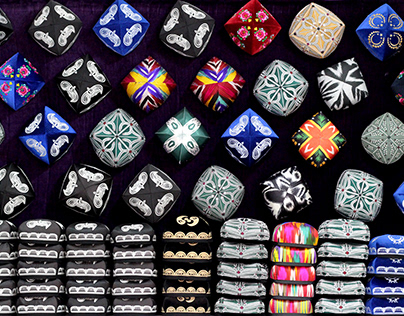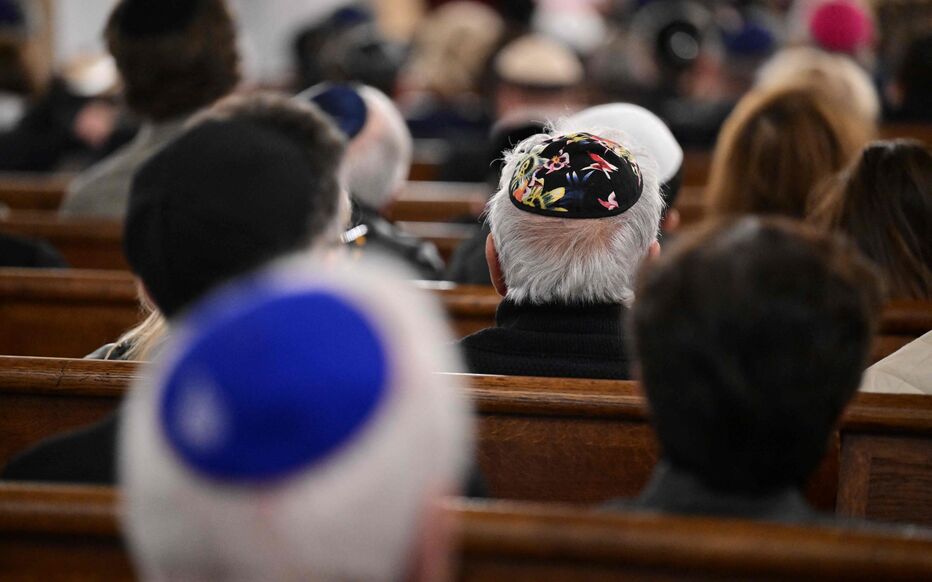by Yossi Hurst, Rene Cassin work experience student
As a Jew, every day, as I get ready to leave my house, I proudly put my Kippa on my head. For me, it is a symbol of my Jewish identity, and the freedom to wear it out without facing persecution is something I could never take for granted. On the other side of the world, thousands of miles away, Uyghur Muslims place a Doppa on their head. For them, the Doppa has become a symbol of resistance, amidst the systemic efforts of the Chinese government to erase Uyghur identity.


The parallels between the Uyghur and Jewish experience, between the Doppa and the kippa, could not be more striking. Throughout Jewish history, there have been multiple attempts to exterminate Jewish people, and to erase Jewish culture. Whether it was the attempted Hellenisation by the Greeks, the Spanish Inquisition, or the Holocaust, Jewish people have survived and flourished, and Jewish culture has been safeguarded. In the toughest times for the Jewish people, the Kippa was a steadfast reminder of our Jewish identity. In a time where the Nazis attempted to not only exterminate the Jews, but in doing so destroy their culture, the Kippa was clung on to, brought to camps, and even buried, hidden – a symbol of Jewish pride and resistance in the horrors of the Holocaust.
Now, as the Uyghur population face genocide, they too cling on, with pride, to their culture, which the Chinese government has tried so hard to erase. Authorities in the Uyghur region of Xinjiang have imposed stringent controls over Uyghur religious activities, imprisoning people for reading religious passages at funerals, forcing Uyghur Muslims to eat pork and drink alcohol, and sentencing Uyghurs to death for organising a Hajj.
A significant threat to Uyghur existence is the forced sterilisation of women, often as a result of violating imposed birth limits – a tool the Nazis also utilised to eradicate the Jewish people.
Despite this, the Doppa, like the kippa, has been a symbol of resistance. Uyghurs in exile have displayed Doppas alongside other cultural artefacts, symbolising the enduring spirit of a culture that is in danger of being eradicated.
In fact, the East Turkistan Government in Exile has encouraged Uyghurs to wear their Doppas daily, and for those who support the Uyghurs and stand in opposition to the genocide being committed against them, to wear one on May 5th, Uyghur Doppa Cultural Festival.
The Festival was initiated in 2009 by Uyghur activist Tahir Imin, and serves as an annual celebration of Uyghur culture, a form of peaceful resistance against forced cultural assimilation. At a similar time, Jewish people are celebrating Pesach, a festival which celebrates the freedom of the Jewish people from slavery, but we should also reaffirm our commitment to universal values.
Just as Jewish people were enslaved, and yearned for liberation, so too Uyghurs strive to maintain their cultural and religious identity in the face of modern-day enslavement and genocide.
The connection between the Jewish and Uyghur experience is deepened by the similarity of the Buchari Jews’ Kippot and Doppas. Both populations come from the Central Asia area, and this is reflected in their head covering; Buchari Jews traditionally wear a round, embroidered Kippa, typically adorned in colourful patterns, much like the Doppa. This similarity reflects the interwoven histories and cultural exchanges between Jews and Uyghurs, echoing the parallels between the horrors that both populations have faced simply as a result of their religion and ethnicity.
Today, therefore, the Uyghur Doppa Cultural Festival must be recognised as a call to action for humanity. The idea of universal human rights, which emerged after the Holocaust, must be upheld, and fought for, with regard to the Uyghur genocide, so that Never Again can become a reality, as was promised 80 years ago. In the face of complicity, we must be the voice alongside the Uyghurs, recognising our interconnected stories, which are perfectly epitomised by the Kippa and the Doppa – both emblems of resistance in the face of the eradication of Uyghur culture.
